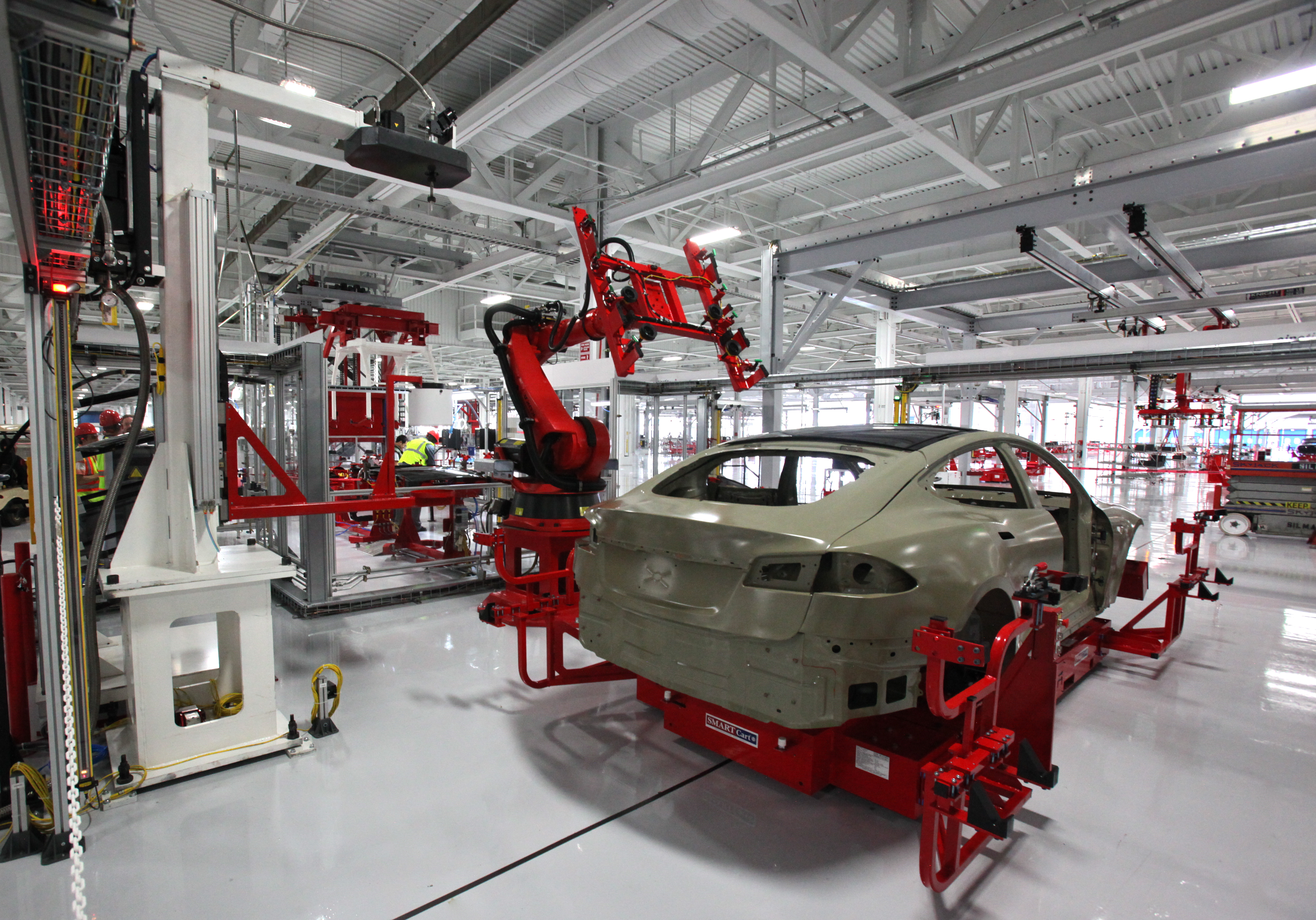
Manufacturing
Manufacturing is the creation or production of goods with the help of equipment, labor, machines, tools, and chemical or biological processing or formulation. It is the essence of the secondary sector of the economy.[1] The term may refer to a range of human activity, from handicraft to high-tech, but it is most commonly applied to industrial design, in which raw materials from the primary sector are transformed into finished goods on a large scale. Such goods may be sold to other manufacturers for the production of other more complex products (such as aircraft, household appliances, furniture, sports equipment or automobiles), or distributed via the tertiary industry to end users and consumers (usually through wholesalers, who in turn sell to retailers, who then sell them to individual customers).
For the functional constituency in Hong Kong, see Manufacturing (constituency).
Manufacturing engineering is the field of engineering that designs and optimizes the manufacturing process, or the steps through which raw materials are transformed into a final product. The manufacturing process begins with the product design, and materials specification. These materials are then modified through manufacturing to become the desired product.
Contemporary manufacturing encompasses all intermediary stages involved in producing and integrating components of a product. Some industries, such as semiconductor and steel manufacturers, use the term fabrication instead.[2]
The manufacturing sector is closely connected with the engineering and industrial design industries.
Etymology[edit]
The Modern English word manufacture is likely derived from the Middle French manufacture ("process of making") which itself originates from the Classical Latin manū ("hand") and Middle French facture ("making"). Alternatively, the English word may have been independently formed from the earlier English manufacture ("made by human hands") and fracture.[3] Its earliest usage in the English language was recorded in the mid-16th century to refer to the making of products by hand.[4][5]
Manufacturing strategy[edit]
According to a "traditional" view of manufacturing strategy, there are five key dimensions along which the performance of manufacturing can be assessed: cost, quality, dependability, flexibility and innovation.[44]
In regard to manufacturing performance, Wickham Skinner, who has been called "the father of manufacturing strategy",[45] adopted the concept of "focus",[46] with an implication that a business cannot perform at the highest level along all five dimensions and must therefore select one or two competitive priorities. This view led to the theory of "trade offs" in manufacturing strategy.[47] Similarly, Elizabeth Haas wrote in 1987 about the delivery of value in manufacturing for customers in terms of "lower prices, greater service responsiveness or higher quality".[48] The theory of "trade offs" has subsequently being debated and questioned,[47] but Skinner wrote in 1992 that at that time "enthusiasm for the concepts of 'manufacturing strategy' [had] been higher", noting that in academic papers, executive courses and case studies, levels of interest were "bursting out all over".[49]
Manufacturing writer Terry Hill has commented that manufacturing is often seen as a less "strategic" business activity than functions such as marketing and finance, and that manufacturing managers have "come late" to business strategy-making discussions, where, as a result, they make only a reactive contribution.[50][51]